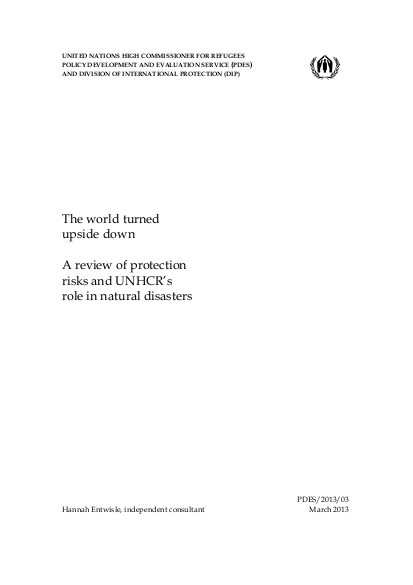
International and national actors continue to explore the protection consequences of the growing number of natural disasters around the world. In 2010 alone, sudden-onset natural disasters forced an estimated 42 million people to flee within their own countries.1 Such statistics underscore the need for clarity on the protection risks that arise in disaster contexts, and what can be done in response. Building upon a 2010 independent review of UNHCR’s experience in various recent natural disasters,2 UNHCR’s Policy Development and Evaluation Service (PDES) and Division of International Protection (DIP) commissioned this study to further develop the agency’s understanding of what protection means in the context of natural disasters, as well as what an effective response protection requires for affected populations. By identifying the most prevalent protection issues that arose in six major sudden onset natural disasters3 in which UNHCR was operationally engaged, the study may better inform UNHCR’s potential operational contributions in support of national governments which may request its assistance in the future. Results of the study may also provide a basis for further discussion within the Global Protection Cluster (GPC) on how best to support protection in disaster response. The six case studies include massive earthquakes, flooding, a tropical cyclone, a tsunami, and a sequence of strong typhoons, each with their own operational challenges and protection risks. At the time the disasters struck, three of the countries were in the midst of active armed conflict (Indonesia, Pakistan, and Sri Lanka), another faced extreme political sensitivity (Myanmar), one had a large peacekeeping mission addressing generalised violence, crime, and insecurity (Haiti), and the last had relatively strong government disaster preparedness and response mechanisms (Philippines). Each country represents a unique combination of disaster preparedness and response capacity, experience with disasters, presence of humanitarian actors, pre-existing vulnerabilities, and political contexts.